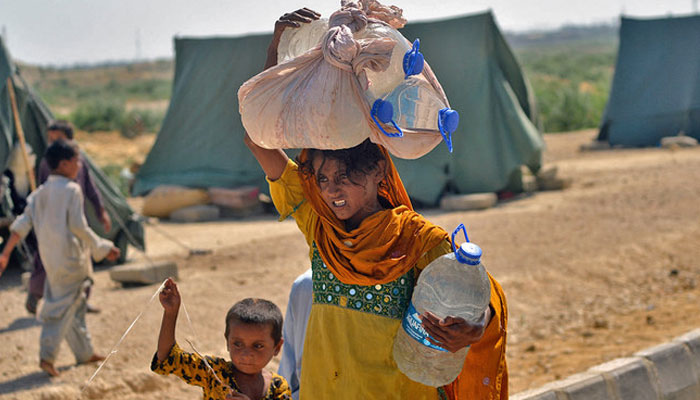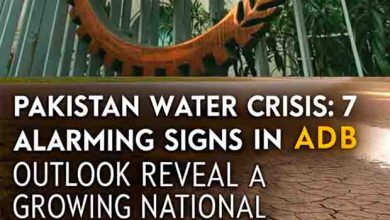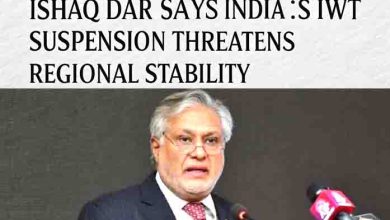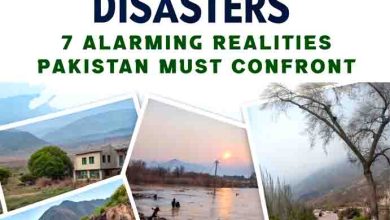Pakistan Water Crisis: Severe Shortage as Water Levels Drop Rapidly
Pakistan faces a worsening water crisis as water levels drop drastically due to drought and overpopulation. WASA declares a drought emergency in Rawalpindi.
Pakistan Water Crisis: Pakistanis Facing Tough Times Getting Water
Pakistan is once again grappling with a severe water crisis, adding to its existing economic and social woes. With ongoing struggles such as debt, inflation, and food insecurity, the country now faces an alarming decline in water availability. The Pakistan Meteorological Department (PMD) has issued a warning predicting significantly lower rainfall in February and March, exacerbating drought conditions across multiple regions.
Following this alarming forecast, the Rawalpindi Water and Sanitation Agency (WASA) has declared the city drought-affected, urging residents to conserve water.
1. Declining Rainfall and Drought Conditions
Pakistan has been witnessing unpredictable monsoon patterns and a consistent reduction in rainfall over the years. The lack of sufficient precipitation has led to:
- Lower dam water levels: Major reservoirs such as Rawal and Khanpur dams are experiencing reduced inflows.
- Declining groundwater reserves: Underground water sources, once abundant, are now rapidly depleting.
- Increased reliance on tube wells: Over 490 tube wells in Rawalpindi alone are being overused to compensate for surface water shortages.

2. Population Growth and Increased Demand
According to Muhammad Saleem Ashraf, Managing Director of WASA, Rawalpindi’s growing population and expanding economic activities are placing an immense burden on the city’s water supply. The demand for water in Rawalpindi has surged to 68 million gallons per day (MGD), while the available supply remains at just 51 MGD.
3. Alarming Drop in Water Levels
Statistics indicate that groundwater levels have plummeted significantly over the years:
- In the 1990s, the water table stood at 100 feet.
- Today, it has dropped to an astonishing 700 feet.
This drastic depletion signals an urgent need for sustainable water management and conservation efforts.
4. The Consequences of the Water Crisis
The ongoing water crisis in Pakistan is impacting multiple sectors, leading to:
- Health hazards: Limited access to clean drinking water increases the risk of waterborne diseases.
- Agricultural distress: Farmers struggle with irrigation shortages, threatening food production.
- Energy challenges: Hydropower generation is affected due to lower dam levels, leading to frequent electricity shortages.
- Rising costs: Water scarcity results in increased reliance on costly tanker services, burdening households financially.
1. Drought Emergency Declaration
To mitigate the impact of the crisis, WASA has officially declared a drought emergency in Rawalpindi, advising residents to:
- Reduce water wastage in daily activities.
- Implement rainwater harvesting where possible.
- Use water-efficient appliances and technologies.
2. Long-Term Solutions Under Consideration
The government and environmental experts are exploring sustainable solutions such as:
- Desalination plants: Introducing seawater purification plants to supplement freshwater needs.
- Efficient irrigation techniques: Encouraging farmers to adopt drip and sprinkler irrigation to minimize water wastage.
- Public awareness campaigns: Educating citizens on responsible water usage.
- Legislation on water conservation: Implementing strict policies to regulate groundwater extraction and industrial usage.
Pakistan’s water crisis is a looming catastrophe that requires urgent intervention. Without immediate and effective measures, the country may face severe socio-economic and environmental consequences.
Key Takeaways:
- Pakistan’s water crisis is worsening due to drought, population growth, and mismanagement.
- Rawalpindi has been declared drought-affected, with water demand surpassing available supply.
- Groundwater levels have dropped from 100 feet to 700 feet in recent decades.
- Urgent steps such as water conservation, sustainable policies, and infrastructure development are crucial to mitigating the crisis.
For further insights on Pakistan’s environmental challenges and potential solutions, explore our related articles on climate change in South Asia and sustainable water management techniques.








